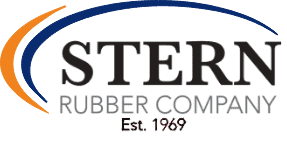Stern Rubber Company is adding to its capacity by adding an additional Desma injection molding press. The new press is an Alpha 250, which has 250 metric tons of clamp pressure. This press will be outfitted with a 2000 ccm (cubic centimeter) injection unit, and is customized to allow it to run a rotating core bar, to further reduce cycle time, and reduce final part cost.
This press is the fourth of this size and style from Desma that Stern Rubber Company has installed in its Staples, MN facility. Stern Rubber Company’s injection capabilities also include a 560 metric ton Desma Benchmark press, and an 800 metric ton Rutil in its Staples, MN location, as well as three 560 metric ton Desma presses in its Aitkin, MN facility.
Desma was founded in Germany in 1946 under the name Deutsche Schuhmaschinen and Company, U. E. Ludwig KG, which was under the brand name DESCO and created machinery for shoe production. It 1953, the brand changed its name to DESMA, still producing shoe soling machinery. Today DESMA has over 4,500 injection presses operating, and over 500 employees in location around the world, DESMA is one of the finest injection presses to mold rubber.
Stern Rubber’s capabilities also include 29 compression/transfer rubber molding presses with platen sizes ranging from 10″x10″ up to 24″x60″ and 42″x42″, 2 rubber extrusion lines, and cryogenic deflashing equipment.
While Stern Rubber molds rubber parts using compression, transfer, and injection, injection is usually the most economical, but there are longer set up times, so this process is usually used for higher volume projects. Besides cost, the other advantage is tolerances. Because the mold is clamped shut before the material is injected, this process is normally capable of holding tighter tolerances than transfer or compression.
The injection molding press takes the rubber into the press as a strip of thermoset elastomer rubber (TSE), and is fed into the barrel of the injection press, where the raw rubber is warmed in a screw to just below the operating temperature of the mold. The warmed rubber is then injected through the feed channels in the steel tool, passing into the cavities of the mold, where it is formed into the shape of the desired parts over a metal mandrel, or over a metal insert inside the cavity, to bond the rubber to the metal, or into a solid part. Vulcanization occurs when the pressure, temperature and desired time creates a chemical bond and crosslinks the rubber. Rubber injection is a far faster process than that of compression or transfer molding, since the rubber is preheated before it enters the cavities of the mold, reducing the cure during vulcanization.
Stern Rubber Company’s Project Coordinators and Technical Group will be happy to work with you to recommend the most economical way to produce your part.
